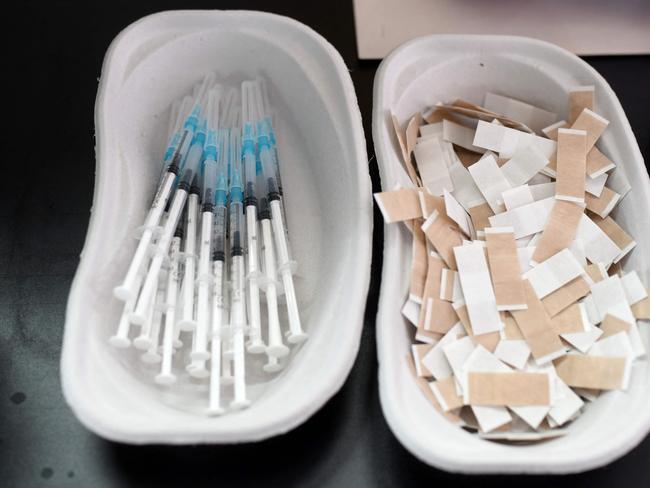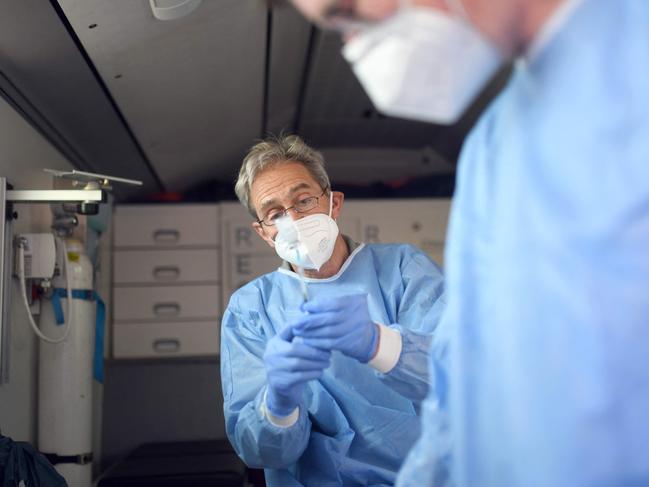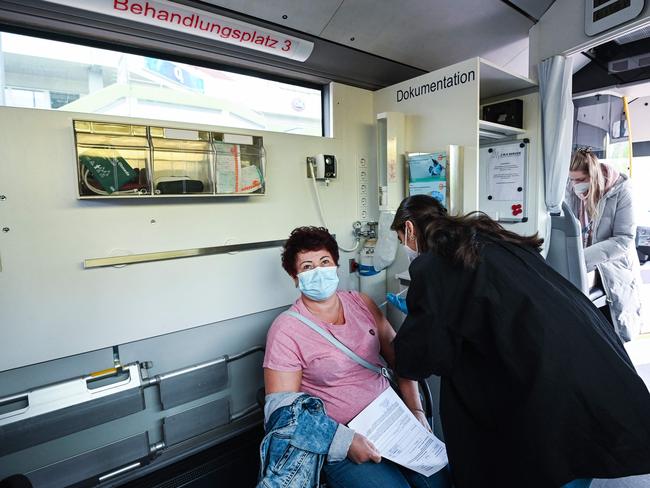World’s next COVID vaccines: What’s being trialled
These are the next generation of coronavirus vaccines from around the world, including Australia, to help protect us.

World
Don't miss out on the headlines from World. Followed categories will be added to My News.
We’re on a first-name basis with the AstraZeneca vaccine and we know all about Pfizer and, if you have family overseas, chances are you’ve heard about Moderna and Johnson & Johnson. But how many new COVID-19 vaccines are in development, when will they be ready for use and just how will we take them?
HOW MANY COVID VACCINES ARE IN DEVELOPMENT?
According to the World Health Organisation, there are currently 277 coronavirus vaccines in development globally, of which 93 have entered the human testing phase. Most of the vaccines in clinical testing are administered as an injection, but there are two which can be taken orally and seven nasal-spray formulations.

WHEN WILL THE NEW VACCINES BE READY FOR USE?
Many of the next-generation vaccines are still in the early phases of human testing, which means they likely won’t become available until later this year or in 2022. Also, there’s no guarantee the vaccines will succeed in testing, and some of the US companies developing them, such as Altimmune and Gritstone, have never brought a vaccine to market.
If the new vaccines do pass testing and do protect against COVID-19, they could be used as booster shots in the US, where the majority of the adult population is expected to be vaccinated in the next couple of months.
WHAT IS THE SITUATION WITH BOOSTER SHOTS?
Infectious-disease specialists expect that boosters will be needed to extend the duration of protection from COVID-19 and to build defences against variants. They also are looking into whether giving a person doses of two different vaccines can improve their effectiveness.
New vaccines could also be used as primary vaccinations in countries that are lagging behind in mass immunisation campaigns.
“It’s critically important down the road to have vaccines that are easier to handle and have better cold-chain characteristics,” John Mascola, director of the vaccine-research centre at the National Institute of Allergy and Infectious Diseases, told the Wall Street Journal.

WHAT ABOUT THIS AUSSIE BLOOD TEST?
As conjecture reigns on just how long vaccinations provide protection against the coronavirus, an Australian company is working on a blood test that will check whether the COVID-19 vaccine is still working or if the person needs a booster shot.
Melbourne-based Trajan Scientific and Medical hopes to have the test ready by the end of this year.
“The role we would hope it would play is to be able to look at vaccinated people over time and ascertain is the immune response deteriorating, or is it maintaining its protection against infection,” Trajan CEO Stephen Tomisich told News Corp Australia.
Mr Tomisich said he was hoping that by the end of the year people will be able to prick their finger, draw a small amount of blood and send it through the mail for testing to check on their COVID-19 protection.
“If everything goes to plan then it would probably be at the end of the year before we will be able to offer that sort of service but we’re a long way from that today,” he said.
IS A NON-INJECTABLE VACCINE A POSSIBILITY?
Yes, and an Australian company could be at the forefront of the next wave of COVID-19 vaccines where patients do not have to endure a painful jab.
A breakthrough nasal spray developed by Melbourne-based biotech company Ena Respiratory, not only stops COVID-19 but also prevents the common cold and flu but has been given government funding to start human trials.
The treatment works by stimulating the innate immune system, the body’s first line of defence against viruses and other germs.
In September trials in ferrets showed it was 96 per cent effective at preventing the replication of the virus that causes COVID-19 in the nose. Safety trials of the vaccine will begin in Sydney in December and the company needs more funding for efficacy trials that would begin in March 2021.

In the US, pharmaceutical company Altimmune is also developing a nasal spray vaccine, similar to an influenza vaccine, which has proven to work well on children.
Canadian biotech company Symvivo has developed a COVID vaccine pill, which is being trialled in a handful of Australians.
Australian clinical trial company Nucleus Network is testing the safety of the vaccine for Canadian biotech company Symvivo and initial trial results are expected soon.
And Vaxart Inc, a pharmaceutical company based in San Francisco, is also developing a coronavirus vaccine in tablet form. According to a report in the Wall Street Journal, an early-stage stage study showed it generated immune responses against the virus and could protect against variants, the company said in February.
Vaxart plans to start a midstage, or Phase 2, study of the tablet vaccine by mid-year, a spokesman told the Wall Street Journal.
The overwhelmingly positive for a vaccine in tablet form is that it could be stored at room temperature making it easy to transport and no medical workforce would be needed to deliver it.

COULD COMBINING VACCINES WORK AGAINST COVID?
Possibly. As the next-generation of vaccines develops, scientists in the US are looking at whether combining multiple existing COVID-19 vaccines is more effective than a single vaccine.
US government scientists hope to learn how to use different booster vaccines to improve the duration of protection while safeguarding against dangerous variants of the virus.
Scientists hope to start the study in the months ahead and to have some answers in the coming months. Oxford University is conducting another study involving mixing vaccines.
Nelson Michael, director of the Centre for Infectious Diseases Research at the Walter Reed Army Institute of Research in Maryland, describes it as the US government’s “Cocoa Puffs/Trix” experiment.
“It’s looking at what’s on the shelf, taking a little of this first and then a little of that next, an approach like a kid would do with cereals,” he told the Wall Street Journal.
Originally published as World’s next COVID vaccines: What’s being trialled


